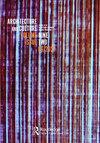Form Follows People? – Copenhagen’s Ny Nørreport as a Post-Participatory Project
IF 1.8
0 ARCHITECTURE
引用次数: 2
Abstract
Abstract Following the dictum: “Form Follows People” two Danish offices used patterns generated from pedestrian movement to create the infrastructural layout when redesigning Copenhagen’s Nørreport train station. A choice that was praised by a unanimous jury and municipal client who were eager to present the winning proposal as being shaped by “the people.” However other readings are possible, the design can also be seen as a striking architectural gesture where the public is both framed as a vital prerequisite yet at the same time as the unaware producers of space. In order to understand this reasoning, this essay looks at the “human oriented approach” the offices adopted for the Nørreport project. This entails discussing the project as somewhat participatory and tracing its references back to the research on pedestrian movement done by Danish architect and urbanist Jan Gehl in the 1960s. An approach that now 50 years later can be seen coinciding with a shift in city planning where municipalities and planning offices readily embrace designing for more loosely defined subjects such as pedestrians or simply “people.” As the argument for the design only formally maintains the social agenda of participation, this essay asks whether the project could instead be read in terms of system design and its participatory practice understood in a cybernetic sense as feedback and input, and as such, if the project ultimately could be perceived as a “post-participatory” project.形式随人?-哥本哈根的Ny ørreport作为一个后参与式项目
在重新设计哥本哈根Nørreport火车站时,两个丹麦办公室遵循“形式追随人”的格言,使用行人运动产生的模式来创建基础设施布局。这一选择得到了一致的评审团和市政客户的赞扬,他们渴望将获胜的方案展示为“人民”的塑造。然而其他的解读是可能的,这个设计也可以被看作是一个引人注目的建筑姿态,公众既被视为一个重要的先决条件,同时也被视为空间的无意识生产者。为了理解这种推理,本文着眼于Nørreport项目中办公室采用的“以人为本的方法”。这需要讨论项目的参与性,并将其追溯到丹麦建筑师和城市规划师Jan Gehl在20世纪60年代对行人运动的研究。50年后的今天,我们可以看到这种方法与城市规划的转变相吻合,市政当局和规划办公室很容易接受为更松散定义的主题(如行人或简单的“人”)进行设计。由于对设计的论证只是形式上维护了参与的社会议程,本文提出了一个问题,即该项目是否可以从系统设计及其参与性实践的角度来解读,从控制论的意义上理解为反馈和输入,因此,该项目最终是否可以被视为一个“后参与性”项目。
本文章由计算机程序翻译,如有差异,请以英文原文为准。
求助全文
约1分钟内获得全文
求助全文
来源期刊

Architecture and Culture
ARCHITECTURE-
CiteScore
0.80
自引率
0.00%
发文量
25
期刊介绍:
Architecture and Culture, the international award winning, peer-reviewed journal of the Architectural Humanities Research Association, investigates the relationship between architecture and the culture that shapes and is shaped by it. Whether culture is understood extensively, as shared experience of everyday life, or in terms of the rules and habits of different disciplinary practices, Architecture and Culture asks how architecture participates in and engages with it – and how both culture and architecture might be reciprocally transformed. Architecture and Culture publishes exploratory research that is purposively imaginative, rigorously speculative, visually and verbally stimulating. From architects, artists and urban designers, film-makers, animators and poets, from historians of culture and architecture, from geographers, anthropologists and other social scientists, from thinkers and writers of all kinds, established and new, it solicits essays, critical reviews, interviews, fictional narratives in both images and words, art and building projects, and design hypotheses. Architecture and Culture aims to promote a conversation between all those who are curious about what architecture might be and what it can do.
 求助内容:
求助内容: 应助结果提醒方式:
应助结果提醒方式:


